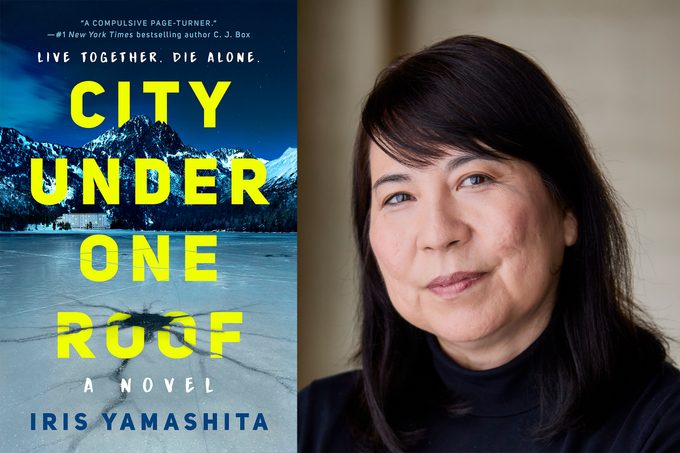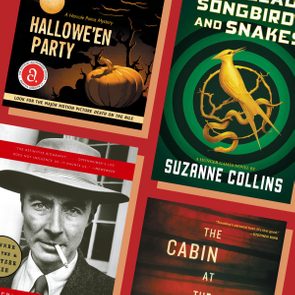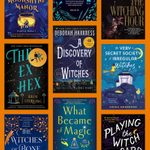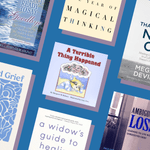Down the Crime-Fiction Rabbit Hole with Iris Yamashita, Author of City Under One Roof
City Under One Roof author Iris Yamashita sat down with the Reader's Digest Book Club to discuss her debut mystery novel and the real town that inspired the story
Our editors and experts handpick every product we feature. We may earn a commission from your purchases.
Imagine this: a lonely Alaskan town separated from the hub of Anchorage by 60 miles and a two-and-a-half-mile tunnel, a narrow thing with rough rock walls that remind you the road is cutting beneath a mountain. Snowstorms can shut the whole tunnel down, preventing travelers from reaching the town—or trapping visitors inside. There, a community of people live and work and go to school in a single high-rise building, a city, if you will, under one roof.
The place is real—go ahead and google Whittier, Alaska—but it’s also put to good use as the setting for Iris Yamashita’s debut mystery novel, City Under One Roof. In this taut piece of claustrophobic crime fiction, big-city detective Cara Kennedy arrives in isolated Point Mettier, Alaska, to investigate a murder. It’s supposed to be an in-and-out job, but when a snowstorm closes the tunnel, she finds herself trapped in town with the 205 residents who live in the same building. They’re all hiding secrets, and one of them may be a murderer.
A longtime screenwriter best known for her Oscar-nominated screenplay for Letters from Iwo Jima, Yamashita kicks off her first mystery book series with a bang. It’s a tightly woven, twisty story that’ll give you a book hangover in the best way possible. And because it was one of the best books we read all month, it was also the February pick for the Reader’s Digest Book Club.
We sat down with Yamashita to talk about her debut novel, the difference between writing for the page and the screen, and more. Check out the full interview in the video below, or keep reading for fascinating tidbits from this new name in crime fiction.
Join the free Reader’s Digest Book Club for great reads, monthly discussions, author Q&As and a community of book lovers.
A born storyteller
Readers like to think authors spring fully formed from college-level English classes, but many (if not most) hold down unrelated jobs before writing their first work of fiction. John Grisham was a lawyer. Stephen King was a teacher. And Iris Yamashita was an engineer.
“Yeah, I had Asian parents,” she says with a laugh. “And they were kind of strict about ‘that can’t be your career.’”
So she choose engineering. But as a born storyteller, she dabbled in writing on the side. “It was always something that I felt was in my bones, that I was passionate about,” she says.
Night classes in writing led to a screenwriting contest that led to a project helmed by Clint Eastwood. Her first gig, writing the screenplay for Letters from Iwo Jima, garnered her an Academy Award nomination for Best Screenplay. “It’s really like a Cinderella story,” Yamashita says.
Lightning strikes twice
It started with a documentary.
Some 20 odd years ago, Yamashita sat down to watch a documentary about a remote Alaskan town where most of the residents lived in a World War II–era building once belonging to the U.S. military. The story stayed in her subconscious until a few years ago.
“I always remembered that place because it was so fascinating, and I just thought, you know, that would make a great place for a mystery,” she says.
What began as a pitch for a streaming TV show transformed during COVID-19 lockdowns into the smart, cinematic novel that is City Under One Roof.
“Everything was shut down at that time and seemed kind of scary, like, what’s going to happen to Hollywood?” she says. “I didn’t know then if they would be hiring writers to keep writing, so I thought, you know, I’m going to try writing a novel.”
She reveled in the freedom of a medium that gave her greater ownership of the work. Where screenwriter Yamashita crafted a story with producers and directors and other Hollywood types weighing in, novelist Yamashita could create a world all her own.
It was easier, she found, to tell a story with Asian characters. Though her breakout screenplay centered on the Japanese experience during World War II, centering Asian characters onscreen has always been a struggle.
“I’ve been writing Asian characters a lot on the screenwriting side, and it’s a tough slog because it’s always about, well, who are you going to cast? If they’re not A-listers, they’re not going to draw anybody. So I always run into that whenever I write an Asian lead. That’s been difficult in the film side,” she says. “But with the book side, you don’t have to rely on casting. You don’t have to have the A-list star in your book. As long as you write an interesting character, it seems like it’s pretty welcoming here.”
Fiction from fact
Like earning an Oscar nomination for her first screenplay, cinching a book deal for her partially written book—practically unheard of for debut authors—was a lightning-strike moment.
But Yamashita had put in the work, starting with the setting: Point Mettier, a fictionalized version of Whittier, Alaska. It reads like a living, breathing character in the novel, in part because Yamashita spent time (admittedly during the warmer, touristy summer) in the real-life city under one roof.
“I have gone there since then to do some research,” she says. “When you were driving through the tunnel, it felt like you were falling through a rabbit hole and that you were going to end up in some really odd wonderland full of strange characters.”
Down the rabbit hole
Yamashita isn’t the only one who tumbled down the proverbial rabbit hole during the journey to the remote town. Protagonist Cara Kennedy has an Alice in Wonderland moment of her own as she plunges into the dark tunnel. It’s a deliberate reference, and Yamashita says the book is filled with other subtle nods to Lewis Carroll’s classic children’s book. (Go ahead and try to pinpoint the white hare or mad hatter as you read.)
The idea of emerging into a wonderland of oddball residents was the jumping-off point for City Under One Roof. “I love quirkiness and quirky places, and this was a setting that I hadn’t seen before,” she says.
In a mystery novel full of secrets and surprises, Yamashita’s offbeat characters add intrigue and surprising humor to the story. It’s a detective novel, of course, but with two additional points of view—a woman and teen, both residents of the town—it’s also a novel about isolation, coming of age and issues like domestic violence.
“It kind of floored me when I saw the statistics of almost 60% of women [in Alaska] have experienced some kind of violence, usually from people they know,” she says. “So that’s weaved in there a little bit.”
At its core, though, City Under One Roof is a book about community. As she takes them on a journey to discover a murderer, Yamashita quietly asks readers to challenge their assumptions and ask themselves what they’d do to protect neighbors in need.
The 205 people living in the isolated town’s single building might not have been warm and welcoming, but they looked out for one another. And the story itself might have grappled with some difficult topics on its way to a satisfying resolution, but as Cara muses, “there was something hopeful in that.”
Buy City Under One Roof from Bookshop.org, Amazon, Barnes & Noble or your local bookseller.






